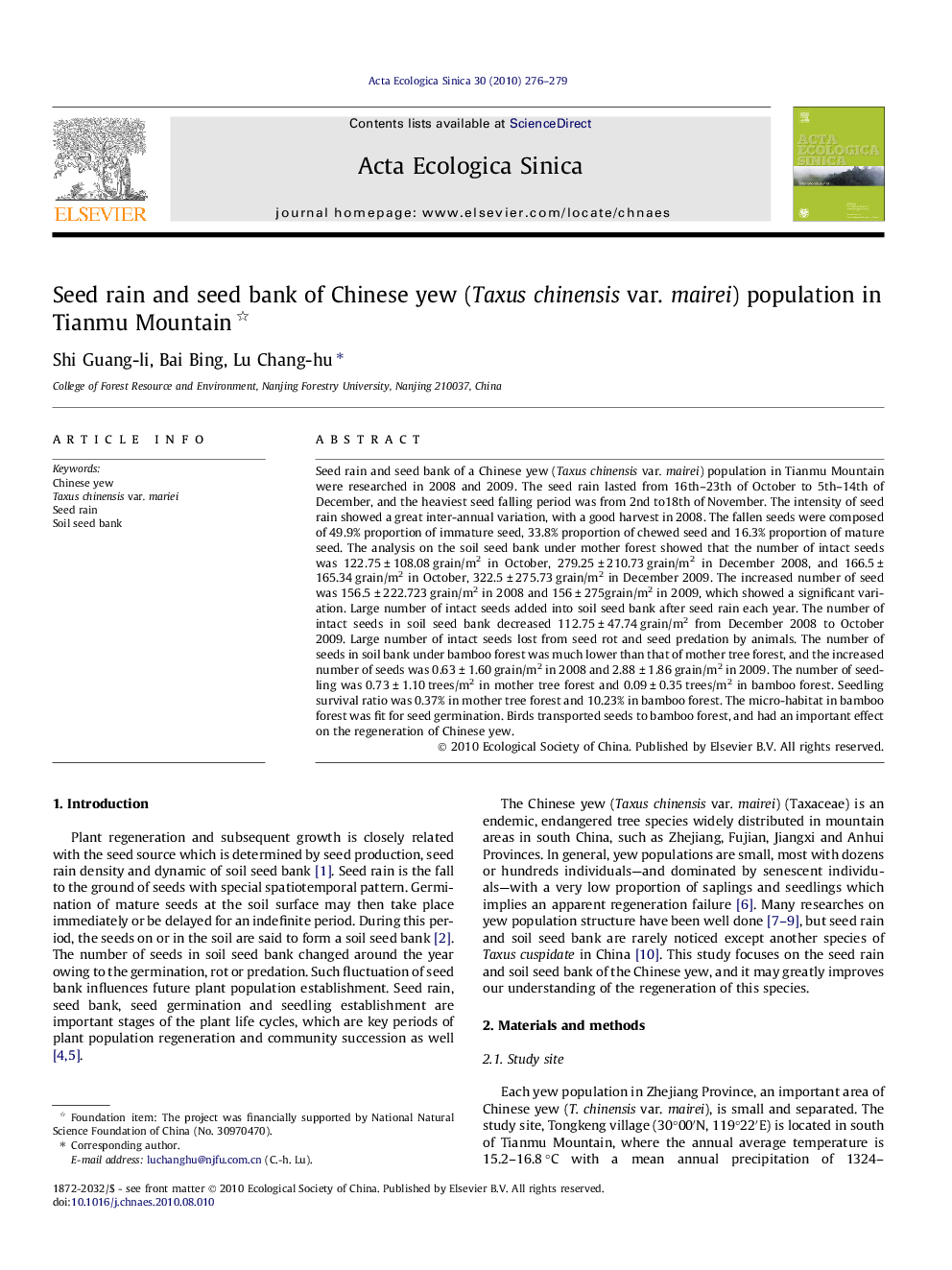| Article ID | Journal | Published Year | Pages | File Type |
|---|---|---|---|---|
| 4380121 | Acta Ecologica Sinica | 2010 | 4 Pages |
Seed rain and seed bank of a Chinese yew (Taxus chinensis var. mairei) population in Tianmu Mountain were researched in 2008 and 2009. The seed rain lasted from 16th–23th of October to 5th–14th of December, and the heaviest seed falling period was from 2nd to18th of November. The intensity of seed rain showed a great inter-annual variation, with a good harvest in 2008. The fallen seeds were composed of 49.9% proportion of immature seed, 33.8% proportion of chewed seed and 16.3% proportion of mature seed. The analysis on the soil seed bank under mother forest showed that the number of intact seeds was 122.75 ± 108.08 grain/m2 in October, 279.25 ± 210.73 grain/m2 in December 2008, and 166.5 ± 165.34 grain/m2 in October, 322.5 ± 275.73 grain/m2 in December 2009. The increased number of seed was 156.5 ± 222.723 grain/m2 in 2008 and 156 ± 275grain/m2 in 2009, which showed a significant variation. Large number of intact seeds added into soil seed bank after seed rain each year. The number of intact seeds in soil seed bank decreased 112.75 ± 47.74 grain/m2 from December 2008 to October 2009. Large number of intact seeds lost from seed rot and seed predation by animals. The number of seeds in soil bank under bamboo forest was much lower than that of mother tree forest, and the increased number of seeds was 0.63 ± 1.60 grain/m2 in 2008 and 2.88 ± 1.86 grain/m2 in 2009. The number of seedling was 0.73 ± 1.10 trees/m2 in mother tree forest and 0.09 ± 0.35 trees/m2 in bamboo forest. Seedling survival ratio was 0.37% in mother tree forest and 10.23% in bamboo forest. The micro-habitat in bamboo forest was fit for seed germination. Birds transported seeds to bamboo forest, and had an important effect on the regeneration of Chinese yew.
